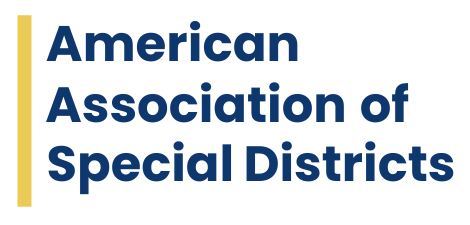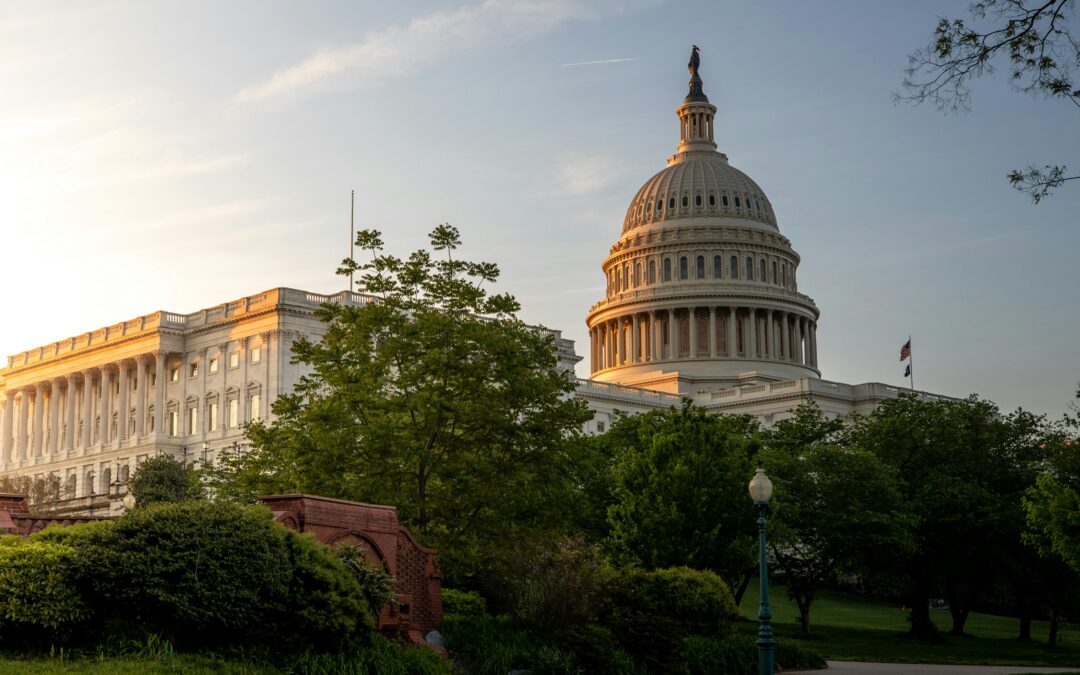
Special districts are critical points for essential public services in thousands of communities across the nation. They serve all types of communities in all 50 states – from rural Arizona to downtown Chicago – although most prevalent in rural, unincorporated communities.
There are more than 35,000 of these special district governments are locally-funded and locally-controlled to enhance quality of life for, protect, and serve their residents.
Despite special districts’ status as the most common form of local government in America, a major underlying issue has plagued – whether directly or indirectly – special districts at times in their pursuit of federally funded programs: federal law does not have a single definition of what a special district is.
Federally Defining “Special District”
The American Association of Special Districts supports bipartisan efforts on Capitol Hill – namely with H.R. 7525 (Fallon) and S. 4673 (Sinema), both entitled the Special District Grant Accessibility Act – to remedy the federal statutory element of the broader problem with the establishment of a “special district” definition. The legislation would require all federal agencies to review and leverage the definition to ensure special districts are classified as local governments in application grant, finance, and other opportunities.
If successful, the Special District Grant Accessibility Act’s relatively immediate, noticeable policy change would special districts’ placement on a more level playing field for funding opportunities afforded to general government entities, and it would serve over the long run as an anchor for reference to ensure eligibility in future federal programs for local government.
More Work to Do “Beyond the Definition“
There is a still a great deal of work to be done at the federal and state levels to address core issues causing special districts’ hurdles and roadblocks to access funding opportunities based on population, to ensure federal data reported on special districts are accurate, and to build special districts’ capacities at state levels to carry out the federal policy’s success.
Further, many of the issues contributing to broader misunderstandings of special districts have roots at the state levels, which AASD is working to address. AASD is the American special districts’ voice, providing expertise and insights to stakeholders and decisionmakers that need to better understand special districts as a unit of local government and for those who seek to ultimately set special districts on a more level playing field to access federally-funded programs for local services.
As AASD continues its launch, the Association will advance these goals through working with the U.S. Department of Commerce to ensure special districts are viewed as geographic units of local government, with the U.S. Census Bureau to increase special districts’ participation in surveys that enhance our understanding of districts, and through building special districts’ capacities to advocate for better recognition of services in the halls of their state capitols.
Recognizing Districts’ Geographies
If successful, a federal definition would give further basis to resolve a key federal regulatory policy matter: amending federal regulation that identifies which types of governments the U.S. Census Bureau recognizes as “geographic units of local government.” This designation is key to obtaining official population figures and other formal Census data that is helpful to determine eligibility for federal programs. Further, acknowledgement of such data would be immensely beneficial to use in support of any type of grant application.
In other words – The federal government currently does not recognize special districts to cover territory, and accordingly cannot certify that special districts serve a population of residents, voters, ratepayers, and taxpayers. This must change.
The Special District Grant Accessibility Act will not outrightly unravel the geographic and population tangles for special districts; however, the U.S. Census Bureau has proven to be a willing partner to resolve this issue, which will aid further federal recognition of special districts as a ubiquitous part of our local government landscape. As such, the national goalpost for special districts’ ultimate success in efforts to federally define “special district” will be to obtain formal recognition of special districts’ unique population and demographic statistics – hopefully in time for the release of the 2030 population figures in 2031. This is a primary objective for the American Association of Special Districts.
Elevating Recognition through Census Participation
Special districts, themselves, have an opportunity every five years to play a role in the collective initiative for enhanced federal recognition with the Census of Governments – the next big opportunity coming to districts’ mailboxes and inboxes in 2027.
The Census of Governments is a national survey of more than 90,000 units of local government that the Census Bureau is mandated to conduct twice per decade. The intent of the Census of Governments survey, according to the Bureau, is to identify “the scope and nature of the nation’s state and local government sector,” and “provides authoritative benchmark figures of public finance and public employment.” In fact, content for AASD’s Districts Data Explorer is sourced from the 2017 and 2022 Census of Government datasets.
The figures gleaned from the survey provide metrics – essentially general health vitals – for the different sectors of local government across the country. The statistics are important to establish workforce, financial, and service impacts and trends, over time, for county, city, town, school district, and special district governments. It is the only consistent, official measurement of special districts available at the federal level.
The Census Bureau acknowledges special districts data could use improvement. This is not the fault of the Bureau, but is rather the culmination of several factors including, but not limited to: lack of a federal standard definition, state-by-state diversity of how special districts exist and operate, the voluntary nature of participation in the Census of Governments survey, and the non-associated, and at-times remote, nature of special districts.
Special districts are strongly encouraged to respond to upcoming Census Bureau surveys – all on a voluntary basis – that they may receive in 2026 and 2027 related to the Census of Governments. Responding to the forms is the simplest step that special districts can take on an individual basis to help the federal government understand special districts across the country – and to accurately measure the magnitude of services special districts provide to millions across the nation.
Plenty of Work to do at the State Levels
As noted above, elements contributing to Census’ woes are non-associated nature of many special districts across the states, and special districts’ differences in structure and operation across the 50 states.
The two issues can be mitigated though state-level collection and standardized publication of special districts’ basic information – which capitalizes on good governance and accountability. This, coupled with coalition-building to unify and centralize special districts’ efforts to build awareness with their state offices would be key.
Several states already collect and centrally publish important public information for local governments in their states – including special districts. Common statistics include revenues, indebtedness, employment figures, and more.
Prime examples: Colorado’s Department of Local Affairs centrally publishes and regularly updates special districts’ public filings. DOLA, as the Department referred to, also provides resources for compliance and goes far above-and-beyond to offer an interactive map of all special purpose units of government across Colorado. Wyoming’s Department of Revenue provides resources, reports and maps (in PDF and shapefile) for their districts as well. And Kentucky Department for Local Government publishes a robust dashboard of public information about the state’s special purpose local governments, similar to what the Texas Controller’s Office publishes. And, the California State Controller’s Office publishes a dashboard of the state’s local government finance metrics, including for special districts.
In some cases, Census looks to these states’ centralized data sources as a more efficient approach to a single agency with information it needs as opposed to canvassing hundreds or more than a thousand districts across the states. As each state’s special districts are different, as the ways in which each state reports local government data, and that could negatively impact how special districts are reflected in official data sets.
For instance, California State Controller’s Office data robust enough to splice its special districts numbers in many ways, but the “special district” category is ultimately aggregated among independent special districts, dependent special districts, joint powers authorities, and certain nonprofit corporations – not all are actually special districts. The result is the appearance of California’s special districts generating a severely bloated $90.5 billion in revenues (FY22), when the true independent special district figure is closer to $28.9 billion. The true figure of independent special districts’ revenues in the forthcoming datasets could be a third of what is reported on the surface.
Organizing Special Districts’ Forums as a Solution to State Needs
State organizations that cater to special districts are considered primary stakeholders for special districts to better understand the compliance measures for local government reporting. These special districts’ organizations serve as crucial organizations for centralized, reliable communication to state agencies collecting and reporting local government finances and other data. These associations should educate agency officials on the differences between special districts and other units of government and the importance of accurately categorizing and publicly reporting the info. Aside from this specific issues, special districts’ state coalitions or associations also have capacity to act with strength in numbers to advocate and educate state and federal policymakers on the importance of districts in their states.
As such, development of local, regional, and state coalitions of special districts to not only advocate, but educate, will be important for the long-term success of the “special district” definition. So much so, that capacity development for special districts’ state advocacy is one of the three primary concepts to AASD’s mission.
Currently, nine states– California, Colorado, Florida, Oregon, Pennsylvania, South Carolina, Utah, and Wyoming… and now Arizona – have state associations broadly representing all types of special districts and educating on issues such as this. Special districts’ leaders and their supporting stakeholders in the remaining are encouraged to open lines of communication with each other to begin conversations on common needs for possible coalition building.
In all, state-by-state and altogether national grassroots efforts on multiple coordinated fronts will be necessary over the coming five to seven years as special districts begin to look “beyond the definition” for ultimate and ongoing federal successes.
Be Part of the Solution
Interested in coordinating a broader conversation with districts in your region or state? The American Association of Special Districts is able to provide resources, consultation, and facilitation for special districts’ coalition building. Contact us at contact@americasdistricts.org to get the ball rolling and for any questions. Also, check out AASD’s membership options, which include coalition development and collaboration as essential benefits. Visit americasdistricts.org/join for more information.

